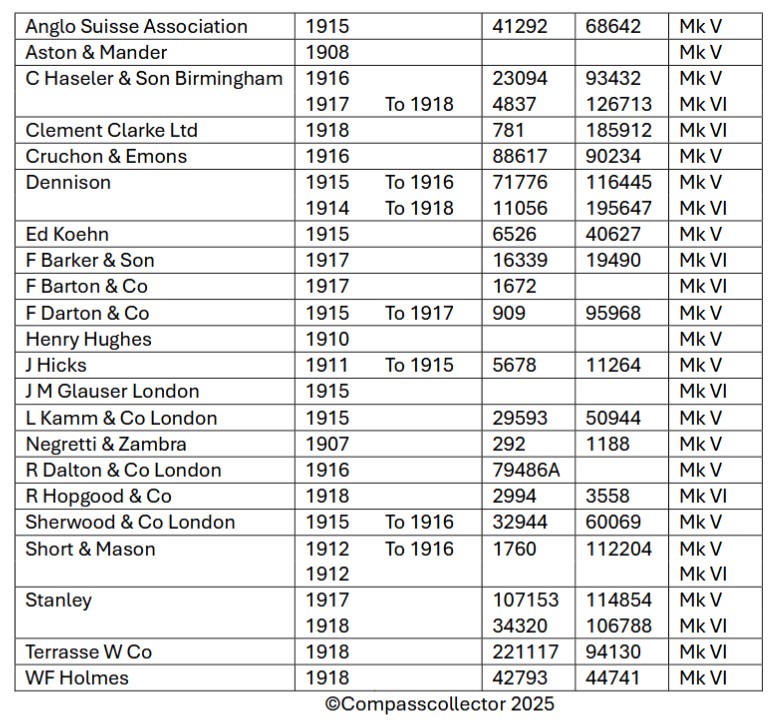These are very popular pocket compasses to collect and the fact that they were all identified with a serial number on the lid enhances their uniqueness and collectability. There are all dry card compasses and there were two main model variations, the Mark V and Mark VI.
I have only ever seen one compass of this size and style without a Mark V or VI insert. This was produced by Negretti and Zambra in a Dennison case. This Negretti and Zambra compass had a more traditional insert comprising a compass rose with a needle with a bar at the North end, see below. The main types (V & VI) have a dry aluminium card on a jewelled mount. All compasses of this type include a transit lock, released when the lid opens and operated via a button set in the bow fixing.
Model variations inserts Mark V and VI
The Mark V is a design clearly with it’s roots based on the Singers Patent compass rose design and was supplied as early as 1905.




Dennison, Haseler, Short & Mason and Stanley appear to be the only suppliers who supplied both models V and VI.
The differences in compasses from different suppliers are in whether or not they used a Dennison case, the compass inserts and their method of fixing to the case. Whilst the compass rose design is standardised as either a Mk V or VI on all the Dennison cased compasses, the inserts can vary either in the material used or the height protruding above the case. This would seem to indicate that the inserts were added separately and that they came from several sources. Dennison were primarily known for their expertise in making cases for pocket watches. All Dennison cased compasses have a clearly defined ridge on the top and bottom that defines the top or bottom from the side of the case. Dennison cases are also stamped internally in the base. I have been told that the case and insert were manufactured separately and then assembled by a third party. Dennison cased compass inserts are always a tight push fit, however some non Dennison enclosed compasses have the inserts fixed differently.
For none Dennison cases, i.e. those without a Dennison case number, the case details can vary at the bow
A majority of pocket watch compasses were numbered, but regretably, I understand that the records were all destroyed on the Blitz of WWII. There are two numbers, a Lid number and a Case number. I have built up records of these numbers and my records are below.


